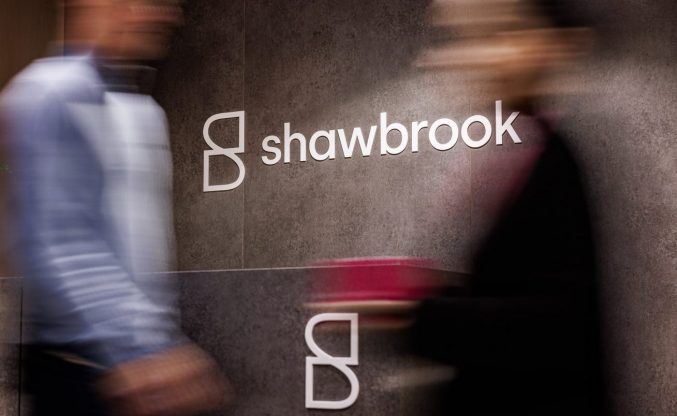Bridging: Up, Down, and Up Again?
By Hannah Duncan

Around the world. Walk the dog. Over the falls. What am I talking about? Yo-yo tricks of course! But I could have also been referencing bridging loans.
Because from what we can tell that market is soaring up and bobbing down like a flashing Duncan yo-yo, straight from the 90s.
To understand more, I spoke to the figureheads behind the findings, CEO of ASTL Vic Jannels and Managing Director at MT Finance, Gareth Lewis.
Together, we unpacked the highs, the lows, and the potentials of bridging loans today.
Two years of high growth
If bridging in 2021 was a yo-yo trick it would be called “The eagle”. The performer would throw the gadget up into the sky, where it would sprout little wings like a Quidditch Snitch, soar into the clouds and eventually flutter back down after two years.
Recent research from the Association of Short Term Lenders (ASTL) reveals bridging volumes hit £7.1 billion in 2023. “It’s a new record for the ASTL”, CEO Vic Jannels tells me over the phone.
Jannels is easy to talk to. He walks me through the successes like we’re taking a stroll through a botanic garden, pointing out interesting developments as we go along.
“There’s a whole raft of reasons you could consider here”, he begins. “Short-term lending has been becoming more and more popular over the past years”. Jannels points to the vast swathes of families who left inner-city flats to purchase countryside homes with gardens during the pandemic.
In 2021, Londoners bought a whopping 7.8% of all homes outside the capital – a 14-year high – according to research by Hamptons.
The following year, the stream was still flowing steadily at 7.3%. To move quickly, families started borrowing money against their flats while they waited for the sale to come through.
For many, bridging was the best market solution, especially as banks began to crank up interest rates. “It was cheaper than borrowing money on the high street”, Jannels explains. “That’s why you had the boom”.
2023: Retirees take a greater market share
The wave continued rolling into 2023. With new hungry new markets arriving, keen to get a bite of bridging.
One of most significant new groups entering the space are the baby-boomers now are on the edge of retirement.
They’re looking to downsize, and need some funds while they wait for their homes to sell. This has led to a gentle rise of bridging loans.
Managing Director of MT Finance, Gareth Lewis, believes that retirees make up “just under a third” of bridging borrowers today. Lewis has been in the industry for twenty years and believes that the trend is increasing.
“If you think about it from the downsizing retirement [perspective], they wouldn’t necessarily have the income that would support a mortgage at that moment in time”, Lewis explains.
“Hence why they have to look at more specialist things like bridging finance”. But there is a block in the market – a lack of suitable smaller properties for retirees.
Around a quarter of over-65s in the UK feel that they have no choice but to “stay put”, even though they would like to downsize. It’s lead to some creative ideas. There’s a growing band of retirees opting to move into round-the-world cruises for years at a time. As this trend increases, bridging lenders may find more adventurous sexagenarians on their books than ever before.

2023: Gen-Zs muscle in
Down-sizers and cruise-goers might be stealing the spotlight. But there is another interesting group creeping – or should we say TikToking – their way onto lenders’ books. As the housing crisis forces first-time buyers to get more resourceful, little by little Gen-Zs are starting to enter the space.
Last month, I spoke to 22-year-old auction and bridging loan influencer Leon Kennedy. He revealed that his top performing video received 70,000 views. It corroborates the data from auction houses who recently reported a 441% increase in browsing activity from 18-to-24-year-olds.
So, what’s fuelling this new curiosity? “A younger profile of client is going to look at using bridging from an opportunistic point of view and they can conceptualise it better”, Lewis explains. Jannels agrees.
Recently the ASTL conducted a survey and found that “the younger quartile understood bridging and – in the main – would not have a problem using it”.
Gen-Z is full of potential. For those bridging lenders that can appeal to them now, plenty of future opportunities await as they age and come into money.

Q2 2023 sees a little dip
In the words of Sir Isaac Newton, “What goes up, must come down”. Indeed, after a whirlwind two years of bridging highs, there was bound to be a dip at some point.
That decline happened last quarter, in Q2 2023. Although it’s worth noting that it wasn’t exactly a rollercoaster, skydiving, adrenaline-fuelled nosedive. It was more of a feathery flutter onto a soft and fragrant pillow.
As Bridging Trends reported, transactions fell to £165.7 million – the quietest in over a year. For Lewis, who has taken a leading role in compiling the report, the results threw a curveball.
“When the data came across my desk, I did find that as a bit of a shock because the market as a whole is actually quite buoyant”, he reveals. But Lewis goes on to explain that the dip feels bigger than it is.
“There were some bigger deals recorded in the first quarter that sort of skewed the figures”, he explains. It’s not that bridging lenders have done badly in Q2, it’s that they did brilliantly in Q1.
However, before anyone reaches for the champagne too early, there are potential tough times ahead.
The rising interest rates are about to slap some lenders right in the face. I was already warned about this some months ago.
In March, I found myself trying to balance a glass of wine while writing in a notepad on the top floors of London’s Shard.
As if that wasn’t surreal enough, bridging’s answer to Michael Caine came over to help me, or as he probably prefers to be called, CEO of The Mezz Lender, Simon Pollins. Pollins warned about how lenders with their own pool of funds will be best placed to survive the bumpy interest rates ahead.
It’s a sentiment Lewis agrees with. “Cash is king”, he comments. “If you are an individual that has a pool of cash, you’re always going to be in a privileged position, and you can be more aggressive”.
High, low or “walk the dog” around the corner?
So, what yo-yo trick will the market perform next? Another soaring high, or a double-dip low? At the time of writing, the jury is out! Lewis is confident.
“We expect to see a rise this quarter, through what we can feel in terms of enquiry and transaction levels”, he explains. But Jannels has a more cautious outlook, “My suspicions are that we may not see a particular growth in the current outlook”, he muses.
While we may not know what will happen over the next months, the general trajectory of bridging finance seems clear. Like every good yo-yo, it won’t stay down for long.

Hannah Duncan is a freelance writer with a passion for finance, sustainable investing and fintech. She loves writing engaging content for industry magazines and investment services, as well as keeping a personal blog at www.hdinvestmentcontent.com










You must be logged in to post a comment.